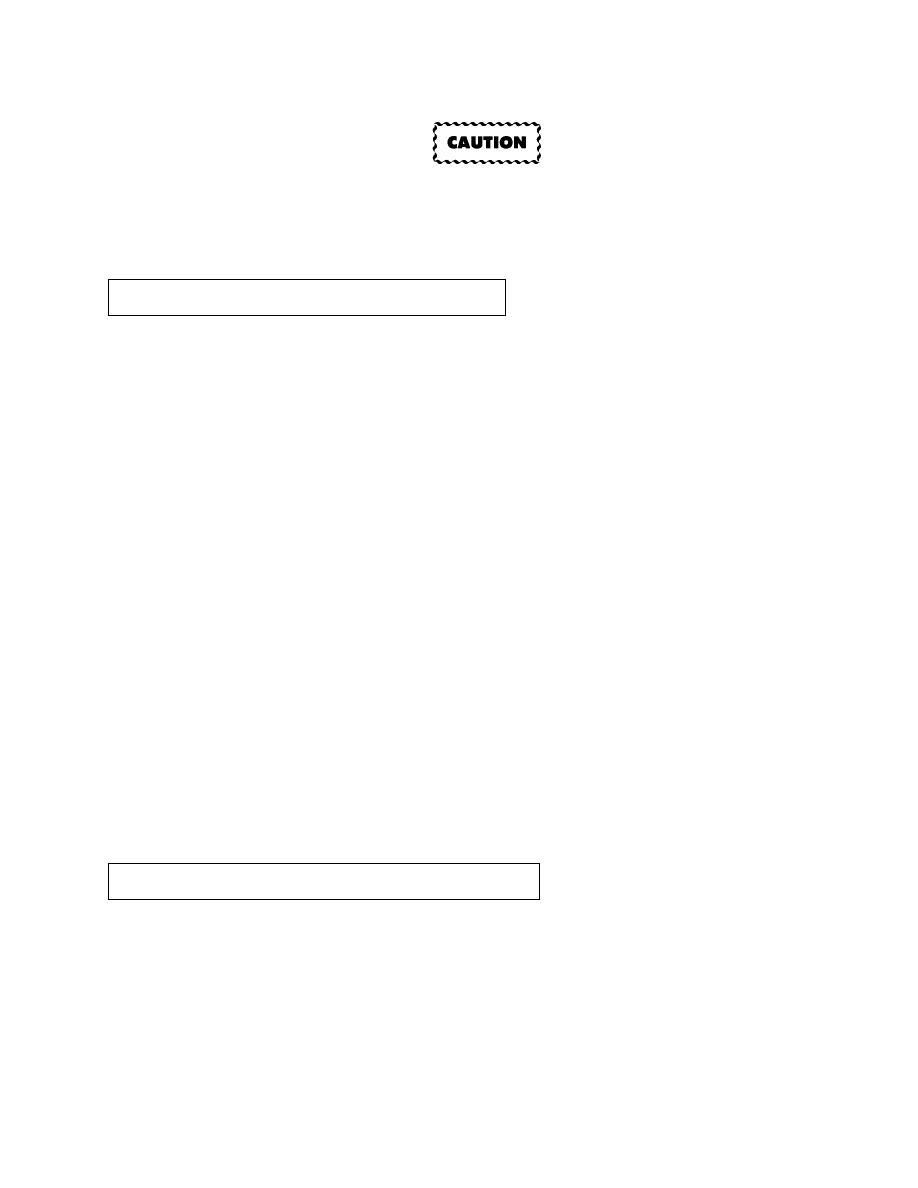 |
|||
|
|
|||
|
|
|||
| ||||||||||
|
|
 TM 9-2320-364-34-1
PLS truck must be properly prepared before welding or damage to equipment may result.
To prepare PLS truck for welding, refer to Para 6-39.
Thoroughly inspect all weldments for cracks, chips, or other damage. Areas of concern include the frame, radiator,
LHS, Material Handling Crane, and cab assembly.
Burrs. Remove burrs from surface teeth with a fine-cut file or cross cloth.
a.
b. Exterior Parts. Chassis and exterior painted parts may be resurfaced when paint is damaged, or where parts
have been repaired.
NOTE
Polished or machined steel parts not protected by cadmium, tin, copper, or other plating or
surface treatments require protection. Bare metal surfaces must be free of moisture when
protective coating is applied.
c. Protecting Parts. Protect bare steel surfaces from rust when not actually undergoing repair work. Dip parts
in, or spray them with corrosion preventive compound. Aluminum parts may require protection in atmospheres
having a high salt content.
d. Screws, Nuts, and Fittings. Replace any screw, nut, or fitting with damaged threads. Inspect tapped holes for
thread damage. If cross-threading is evident retap the hole for the next oversize screw or stud. If the retapping will
weaken the part, or if the cost of the part makes retapping impractical, replace the part. Chasing the threads with
proper size tap or die may be adequate.
e. Stud Installation. When installing studs use a proper driver. A worn stud driver may damage the end thread.
Then a chasing die must be used before a nut can be screwed on. This procedure will remove cadmium plating and
allow corrosion. Before installing a stud, inspect the hole for chips. Blow out foreign matter and start stud by hand.
Before final insertion, coat thread with a film of antiseize compound. Install stud to proper "setting height", which is
the total projecting length.
Dents. Straighten minor body dents by bumping with a soft-faced hammer while using a wooden block backing.
f.
Sheet Metal Repair. Repair minor skin cracks by installing patches.
g.
Preparation. Remove protective grease coatings from new parts before installation.
a.
b. Preformed Packing Installation. Lubricate all preformed packings with a thin coat of light mineral oil before
installing. To install a preformed packing, first clean the groove, then stretch packing and place into position. Place
component on flat surface and uniformly press packing into position. Ensure preformed packings are not nicked or
torn during assembly.
2-855
|
|
Privacy Statement - Press Release - Copyright Information. - Contact Us |